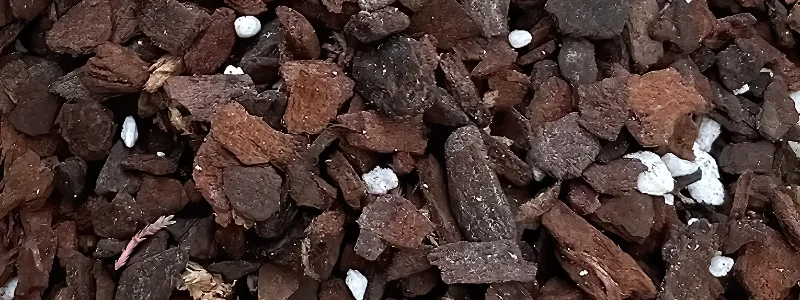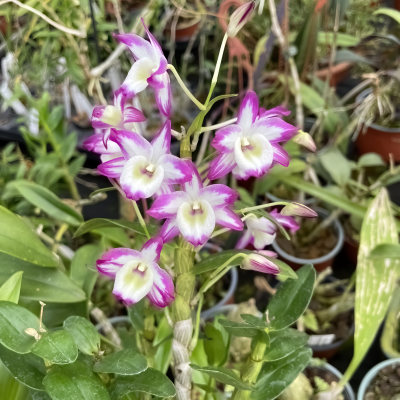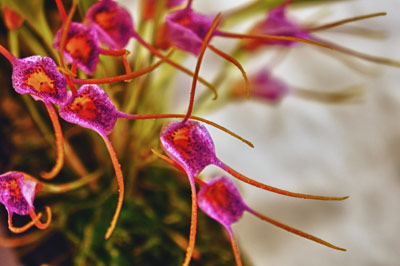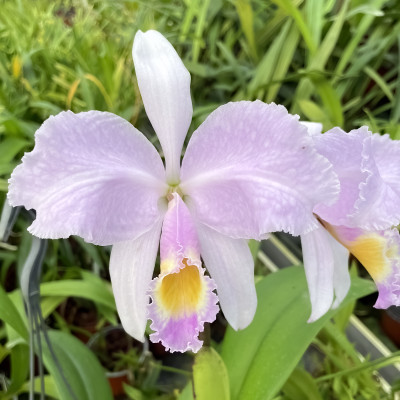Das richtige Orchideensubstrat: Tipps und Empfehlungen für den Kauf

Orchideen sind wunderschöne und anspruchsvolle Pflanzen, die eine spezielle Pflege benötigen, um optimal zu gedeihen. Ein entscheidender Faktor für das Wohlbefinden und die Gesundheit von Orchideen ist das richtige Orchideensubstrat. In diesem Artikel werden wir Ihnen alles sagen, was Sie über Orchidensubstrat wissen müssen, sowie Empfehlungen für den Kauf geben. Lassen Sie uns eintauchen!
Warum ist das Orchideensubstrat so wichtig?
Bevor wir uns mit den verschiedenen Arten von Orchideensubstraten befassen, ist es wichtig zu verstehen, warum das Substrat für Orchideen so entscheidend ist. Orchideen stammen aus verschiedenen Lebensräumen und haben sich im Laufe der Evolution an unterschiedliche Bedingungen angepasst. Einige Orchideenarten wachsen auf Bäumen (epiphytisch), andere auf Felsen (lithophytisch) und wieder andere auf dem Boden (terrestrisch). Die Wurzeln dieser Pflanzen sind darauf spezialisiert, Wasser und Nährstoffe aus der Umgebung zu filtern und aufzunehmen.
Das richtige Orchideensubstrat ermöglicht es den Wurzeln, sich frei zu entfalten und die benötigten Nährstoffe aufzunehmen. Es bietet auch eine gute Drainage, um Staunässe zu vermeiden, die den Wurzeln schaden könnte. Das Substrat sollte ausreichend luftdurchlässig sein, um den Wurzeln Sauerstoff zuzuführen und Fäulnis zu verhindern. Darüber hinaus sollte das Substrat in der Lage sein, Feuchtigkeit zu speichern, um die Pflanze in Trockenperioden mit Wasser zu versorgen.
Unterschiedliche Arten von Orchideensubstraten
Es gibt eine Vielzahl von Orchideensubstraten auf dem Markt, die speziell auf die Bedürfnisse von Orchideen abgestimmt sind. Jedes Substrat hat seine eigenen Eigenschaften und Vorteile. Im Folgenden werden wir Ihnen einige der gängigsten Orchideensubstrate vorstellen:
1. Pinienrinde
Pinienrinde ist eines der beliebtesten Substrate für Orchideen. Es besteht zu 90% aus Pinienrinde und zu 10% aus Sphagnum-Moos. Dieses Substrat eignet sich besonders gut für Phalaenopsis Orchideen, die in Töpfen ab 12 cm Durchmesser oder größer wachsen. Es ist auch für andere Orchideenarten geeignet, die Luftwurzeln entwickeln und eine gute Luftversorgung benötigen. Die lockere Struktur der Pinienrinde ermöglicht eine ausreichende Sauerstoffzufuhr und verhindert Staunässe. Das Sphagnum-Moos speichert Feuchtigkeit und schützt die Orchidee vor dem Austrocknen.
2. Grobes Orchideensubstrat
Das grobe Orchideensubstrat eignet sich am besten für Töpfe mit einem Durchmesser von 12 bis 15 cm. Es besteht aus biologisch abbaubaren Fasern, die aus den Abfällen der Kokosproduktion gewonnen werden. Dieses Substrat enthält 15% Rinde, 30% Kokoschips, 25% Kokostorf und 30% grobe Kokosfasern. Es bietet eine gute Drainage und Luftzirkulation für die Wurzeln der Orchidee.
3. Feines Orchideensubstrat
Das feine Orchideensubstrat eignet sich besonders gut für Jungpflanzen in Töpfen mit einem Durchmesser von 9 cm. Es besteht aus 60% Kokostorf, 15% Kokosfasern und 15% Minibark. Die feine Struktur des Substrats ermöglicht eine gleichmäßige Verteilung von Wasser und Luft und dient als Indikator für den Bewässerungsbedarf der Orchidee. Wenn das Substrat trocken anfühlt, ist es Zeit, die Orchidee wieder zu gießen.
4. Organische und anorganische Orchideensubstrate
Es gibt zwei Arten von Orchideensubstraten: organische und anorganische. Organische Substrate bestehen aus natürlichen Materialien wie Pinienrinde, Kokosfasern, Holzfasern, Moos und Nussschalen. Diese Substrate sind nachhaltig und bieten den Orchideen eine natürliche Umgebung. Anorganische Substrate wie Styropor, Steinwolle und Sand werden aufgrund ihrer negativen Auswirkungen auf die Umwelt nicht mehr empfohlen.
5. Selbstgemischtes Orchideensubstrat
Wenn Sie genau wissen möchten, was in Ihrem Orchideensubstrat enthalten ist, können Sie es auch selbst mischen. Verwenden Sie dafür hochwertige Materialien wie Pinienrinde als Hauptsubstrat und mischen Sie gegebenenfalls andere Zuschlagstoffe wie Sphagnum-Moos oder Perlite hinzu. Achten Sie darauf, dass die Materialien sauber und frei von Schädlingen oder Krankheitserregern sind.
Wann sollte man Orchideen umtopfen?
Orchideen sollten alle zwei bis drei Jahre umgetopft werden, um das Substrat zu erneuern und den Wurzeln ausreichend Platz zu geben. Wenn das Substrat zu fein wird oder die Wurzeln aus dem Topf herausragen, ist es Zeit für's Umtopfen. Es ist wichtig, die Orchidee während der Blütephase nicht umzutopfen, da dies zu einem Schock für die Pflanze führen kann. Topfen Sie die Orchidee immer vorsichtig um und achten Sie darauf, dass die Wurzeln nicht beschädigt werden.
Fazit
Das richtige Orchideensubstrat ist entscheidend für das Wachstum und die Gesundheit Ihrer Orchideen. Wählen Sie das Substrat entsprechend der Bedürfnisse Ihrer Orchideenart aus und sorgen Sie für eine gute Drainage und Luftzirkulation. Ob Sie sich für Pinienrinde, grobes Substrat oder feines Substrat entscheiden, achten Sie darauf, dass es hochwertig und an die spezifischen Anforderungen Ihrer Orchideen angepasst ist. Topfen Sie Ihre Orchideen regelmäßig um, um das Substrat zu erneuern und den Wurzeln ausreichend Platz zu geben. Mit der richtigen Pflege und dem richtigen Orchideensubstrat werden Ihre Orchideen gesund und prächtig gedeihen.
1 Gültig bei Erstbestellung. Ihr Rabatt wird automatisch abgezogen.




